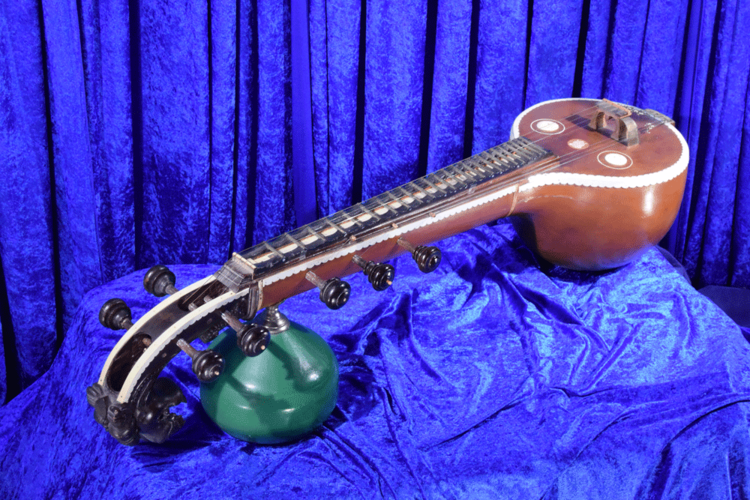
Saraswati vina (Saraswathi veena) is the instrument associated with Saraswati, the goddess of learning and the arts. This instrument is common in south India and is an important instrument in Carnatic sangeet. It is variously called simply vina, or veena, the “Saraswati” part being implied.
The Saraswati vina has an interesting construction. It has a body made of wood, generally, this is jackwood. The highest quality vinas have the entire body carved from a single block of wood, while the ordinary vinas have a body which is carved in three sections (resonator, neck and head). There are 24 frets made of brass bars set into wax. There is another resonator at the top of the neck. This is no longer a functioning resonator, but is mainly used as a stand to facilitate the positioning of the instrument when it is played. Because it is no longer functioning, it is not unusual to find that this upper resonator may be made of acoustically neutral materials such as paper mache, cane, or other similar materials. Unlike north Indian instruments like the sitar, the Saraswati vina has no sympathetic strings. It has only four playing strings and three drone strings (thalam). The main bridge is a flat bar made of brass. This bar has a very slight curve. It is this light curve which gives the vina its characteristic sound. A major centre for the manufacture of the Saraswati vina is in Tanjore.
The playing position is shown below. We see that the performer sits cross-legged on the floor, the small vestigial gourd rests against the left thigh while the main resonator rests on the floor. The right hand plucks the strings while the left hand frets the instrument.
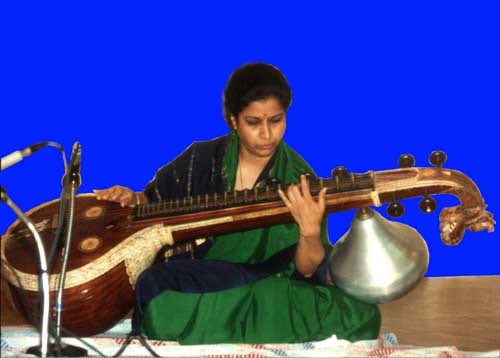
| This book is available around the world |
|---|
Check your local Amazon. More Info.
|
Tuning the Vina
The vina has two classes of strings. There are drone strings and playing strings. The playing strings have the ability to play melodies, while the drone string have no such potential. Of the playing strings, one is especially important; it is the main playing string.
These strings are shown in the illustration below:
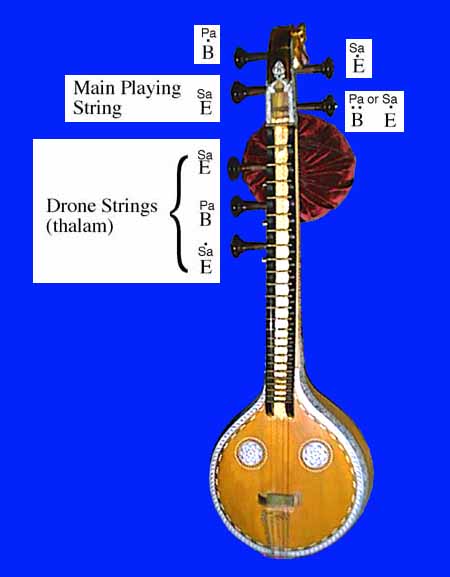
The instrument shown above is tuned to a key of E. Typical tunings are E, F, or F#. To effect other tunings, one usually has to use heavier or lighter strings. However, changes of half an octave can be obtained by inverting the tuning, and treating the second string as the main playing string. This last approach is generally frowned upon by purists, but is a trick commonly used in the south Indian film industry.
Fingering and Fretting the Vina
The illustration below shows the musical values and fingering of the vina’s frets.

It is very easy to read the code for each position. For instance, “S” and “P” indicate the Sa (shadaj) and Pa (pancham). A code such as #2R/#1G means that this position may be used for either the second position Re or the first position Ga. Dots are used to denote the register; for instance, one dot below indicates the lower register, while a dot above indicates the higher register. For more information on south Indian scale structures, kindly check out “Saptak – The Scale”, and more importantly, “swar“.
But the above illustration only shows up to the first tetrachord of the middle octave (purvang). The upper tetrachord (uttarang) is shown below:
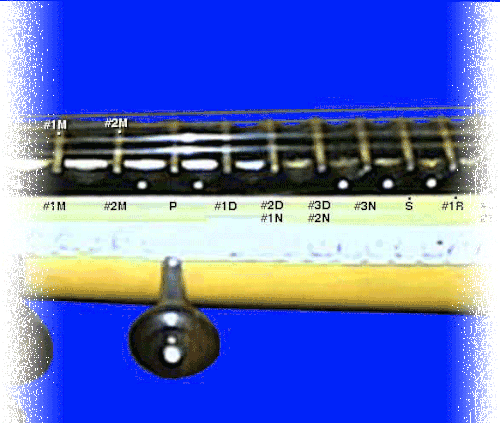
This is of course limited to the first string. This string can also yield another octave. This is shown below:
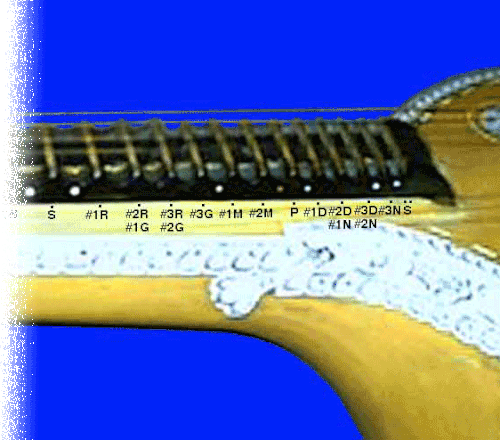
Selected Video
Other Sites of Interest
Bharatiya Sangeet Vadya (Review)
Catalogue of Indian Musical Instruments
Fractal dimension analysis of audio signals for Indian musical instrument recognition
Natural synthesis of North Indian musical instruments
Recognition of Indian Musical Instruments with Multi-Classifier Fusion
The Tagore collection of Indian musical instruments
Improvement of Audio Feature Extraction Techniques in Traditional Indian Musical Instrument
East Indians musical instruments
